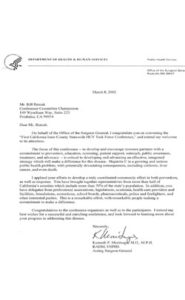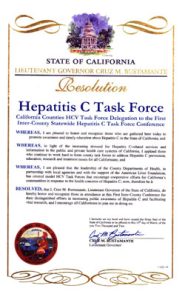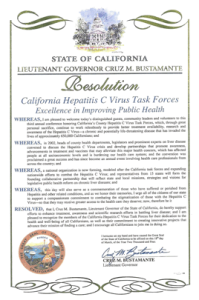Our mission
The California Hepatitis C Task Force mission is to drive policy that removes barriers to viral hepatitis treatment and promote best practices for the delivery of evidence-based treatments for viral hepatitis by raising awareness, promoting partnerships and mobilizing resources to improve viral hepatitis education, prevention, screening, and reporting.
What we do
We provide support, networking for developing and existing community organizations, reinforcing local efforts for better access to care for those affected with viral hepatitis.
Advocacy
We act as a common voice for hepatitis patients on the local, state and federal level. We passionately take policy positions which favor patients and their access to care. We use grassroots support to drive legislation that puts patients’ care first. Read more about our advocacy »
Research
We develop models and improve existing viral hepatitis prevention, education, treatment, testing and reporting practices that support the delivery of evidence based treatments for viral hepatitis.
Read more about the development pipeline for medications…»
Collaboration & Partnerships
We bring together concerned citizens, patients, health leaders and stakeholders to form community partnerships. This is an endeavor to bring services to those affected by viral hepatitis, enhance access to care and drive public health reform. Read more about our collaborations
Starting in 2002, The California Hepatitis C Task Force received several important indications of the importance of its work. In addition to two resolutions from the State of California, there was a significant letter from the Acting Surgeon of the United States. Click on these images to show PDFs of these archival documents:



A Brief History of Our Organization
The California Hepatitis C Task Force was incorporated as a 501(c)(3) not for profit corporation in March 2003. At the time, there was no highly effective cure and continued liver damage was probable.
This organization was founded by William Remak and his dedicated team to address the lack of public awareness, education, prevention, testing, reporting and treatment for viral hepatitis.
The goals of the organization were and still are:
- To create systems for collection and measuring data, and disperse information
- Assist county public health agencies statewide to develop Hepatitis Task Forces, viral hepatitis community strategic plans and promote public awareness
- Identify resources to collaborate with, to expedite the eradication of viral hepatitis
Hep C In 2003
There were estimated 600,000 to 650,000 cases of Hepatitis C, no reliable treatment, no highly effective cure, no vaccine and no urgency on the part of public health agencies in the state who had been overwhelmed with the HIV/AIDS crisis for nearly two decades. 60% of the victims of hepatitis C had no idea they were infected with the virus. On the 14th anniversary of the discovery of the Hepatitis C virus, the California Hepatitis C Task Force was established to head off another devastating healthcare crisis looming on the horizon.
Silent and Deadly
Millions of people were infected with the Hep C virus, prior to its discovery in 1989. The virus was not eradicated from the blood supply until 1992.
In less than 10 years following the discovery of the Hepatitis C virus, the annual number of reported new Hepatitis C infections declined by more than 80%.
However, by 2007 deaths due to Hepatitis C surpassed deaths due to HIV for the first time. Deaths from Hepatitis C continue to rise while deaths from HIV continue to fall.
California Viral Hepatitis Costs
Hepatitis C has cost California more than 300,000 hospitalizations for viral hepatitis-related medical conditions, resulting in health care costs of over $20 billion from 2002 through 2011. This does not take into account the human suffering, lost wages, lost taxes and SSI. As of 2014, all of this is preventable and avoidable with an effective, all oral cure that enables 95% of patients to clear the virus. Our job is to make sure patients know about the cure and have access to treatment.
Our biggest challenges moving forward
- Public awareness
- Testing of all baby-boomers (people born between 1945 and 1965) and other risk factors. More about the guidelines »
- Timely and affordable access to care including liver cancer.
- Building capacity for education and delivery of providers.
- Reduction in the organ donation crisis and its impact on liver disease.
- Advocating for increased delivery of viral hepatitis immunization programs and increased vaccination research and development for Hepatitis C.
- Elimination of viral hepatitis by 2030.


